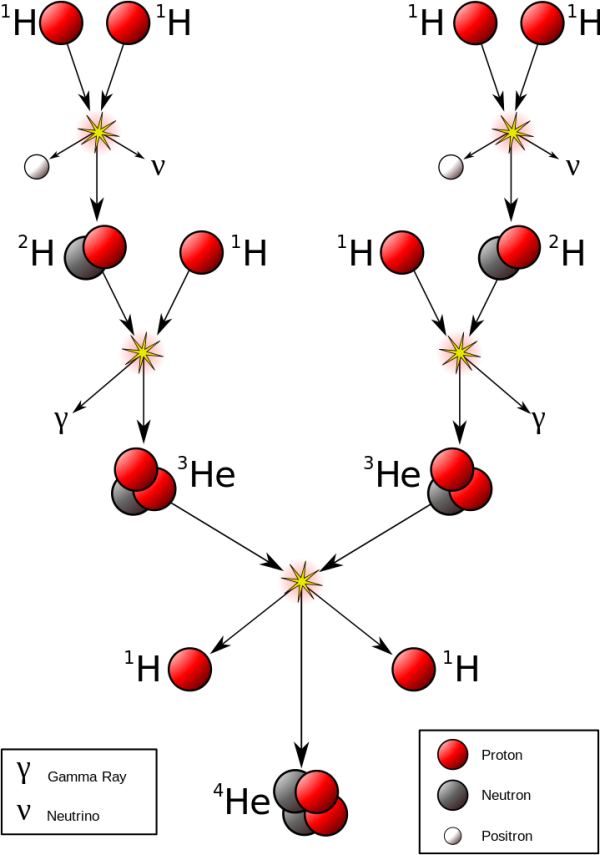"It's ironic: in order to observe the Sun, you need to go kilometers underground." -Art McDonald
Imagine you finally thought you understood how the Sun worked: how light elements fused into heavier ones, emitting energy in the process. And when you finally completed your calculations, you got nuclear physics results that matched what you observed exactly, energy outputs that fit, and a prediction for the emission of neutrinos.
 Image credit: Wikimedia Commons user Borb, created in Inkscape, of the proton-proton chain in the Sun. Note the production of neutrinos.
Image credit: Wikimedia Commons user Borb, created in Inkscape, of the proton-proton chain in the Sun. Note the production of neutrinos.
Yet when you built the detector to see them, you only saw a third of what you anticipated! What would you do? Well, this was a mystery that took nearly 40 years to solve, but it turned out that neutrinos aren't massless, but have a small, non-zero mass that allows them to flavor change from one type into another: neutrinos oscillate. It was finally confirmed in the 2000s by the Sudbury Neutrino Observatory, and for that, Art McDonald won the 2015 Nobel Prize in physics.
He's giving today's Perimeter Institute public lecture, and I'm live-blogging it. Check it out!


Ethan,
I started wondering about what *initiated* the nuclear fusion on our sun.
But then you explain, I think, that it began because of the “incredible temperatures, pressures and densities at the Sun’s core, hydrogen nuclei were fused together in a chain reaction to eventually produce helium, releasing huge quantities of energy in the process.”
So, then I wondered what caused the sun’s collecting so much matter, such that it had such incredible densities, pressures, and temperatures.
Was it gravitational force? But gravity pulling *to what* in a homogeneous universe?
Why didn’t our sun’s gravity also pull in Jupiter and the other planets?
Why didn’t Jupiter turn out like the sun?
Silly, stupid questions, no doubt. But I’d still like to know.
Other people may have better questions.
And guess what? I just googled a bit tonight and I found one your articles. In it, you say everyone agrees on the big picture, but that the details get “awfully messy.”
http://www.forbes.com/sites/startswithabang/2015/11/03/leading-theory-f…
I didn’t read much of it, as it’s about 12:30 A.M. and I have to get ready for the next sunrise.
"Was it gravitational force?"
Yes.
"Silly, stupid questions,"
Yes.
"But I’d still like to know."
No you don't. Never had before, won't this time.
Now to your claims:
"But gravity pulling *to what* in a homogeneous universe?"
It isn't a homogenous universe. Look how the sun isn't the same density as interstellar space.
"you say everyone agrees on the big picture, but that the details get “awfully messy.”
Irrelevant. The first bit doesn't change anything about the latter, nor vice versa.
"I didn’t read much of it,"
But that didn't stop you making claims....